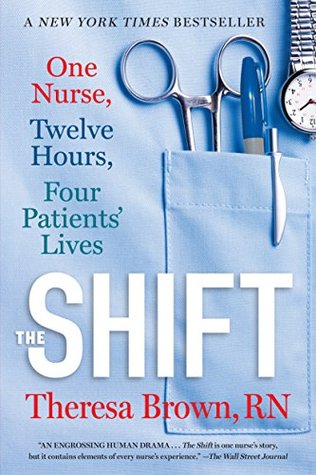More on this book
Community
Kindle Notes & Highlights
Read between
December 27 - December 28, 2019
Nurses used to “chart by exception”; we would note anything going on with the patient that deviated from normal and assume the rest was OK. Fear of lawsuits, combined with electronic health systems loaded with regulatory bells and whistles, has made charting more and more about recording everything possible about the patient, whether abnormal or not. Do the lungs sound clear? That’s normal—chart it. Is the patient urinating? Normal—chart it. Having bowel movements? Chart that, but also specify the consistency, color, and frequency. Is the pulse steady and regular? That’s normal, too, so make
...more
about patients falling down since falls can lead to regulatory hand slaps, additional costs of care that may not be reimbursed, and lawsuits, as well as, most important of all, patients getting hurt. The managerial response to this risk is to require more charting on whether a patient could fall. Every shift, I complete a full fall assessment on every patient, noting age, whether he’s on narcotics, if he’s incontinent and unsteady on his feet, and if there have been falls recently. The electronic health record then gives the patient a fall risk ranking of low, medium, or high. Each level of
...more
carefully analyzing a patient’s risk of falling is probably a good idea. It needs to be quicker, though, because the irony right now is, the time I spend on the computer carefully documenting a patient’s fall risk is time I could physically spend in the patient’s room talking about how we can work together to keep him upright and on his feet. Designers of electronic charting systems don’t seem to understand that checklists themselves are not the innovation, because checklists are not substitutes for care. The real innovation is having staff use lists to consistently create the safest and
...more
I would like to be encouraged to physically observe my patients rather than simply record that I have observed them. Today at least I documented that I kept Mr. Hampton safe from falling and I also had time to actually do it.
The time I spent with Sheila, her sister, and brother-in-law feels like one of the most important things I will do today, but it doesn’t show up on any of my electronic to-do lists. We need a menu that includes the option: spent time comforting patient with life-threatening diagnosis. But nothing that empathy-intense gets included in our required paperwork.
these days, charting pulls nurses away from the bedside more and more.
It should not be easier to order a sweater from Lands End than to chart on my patients, but it is. Click, scroll, type, enter. Here’s the menu with twenty choices, none of them the one I need. Here’s the point where I need information from two different screens, but there’s no way to toggle between them. Here’s the screen with thirty discrete options to check, but the window it opens up only shows me five at a time.
It’s frustrating to end a shift and then stay late doing the day’s charting. “If it isn’t charted it isn’t done” is the mantra we hear over and over again in school.
Lunch is touchy for a lot of nurses. We don’t get paid for the thirty minutes when we supposedly eat, but there’s rarely staff to cover our patients, so
most of us work through lunch without being paid for that time. Class-action lawsuits have been filed on behalf of nurses not getting paid for a lunch break we never take, but the practice, at least from what I hear, is common. Even when there’s an official way for nurses to note that we didn’t get a lunch break and should be paid for the time, the hospital may subtly dissuade nurses from putting in a claim for every non-lunch. I worked a year at my first job before I even learned I should be paid for that time. Labor laws say that lunch is thirty minutes of uninterrupted time, but on my floor
...more
No one else is in the break room, so I turn off the wide-screen TV. After all the pings and beeps
and buzzes and alarms on the floor I want silence.
Pride’s at work here. I’m too proud to tell her the assignment feels potentially overwhelming, that I’m afraid I can’t do it. I will not make myself vulnerable in front of someone who has power over me because I want to show I can do it all, that I’m that good: Theresa Brown, super nurse. If I spoke up it might make a difference—it might—but now I’ll never know.
Nurses sometimes joke at change of shift that it was a good day if “everyone was still breathing when I left.”
What now? I’m drowning in details, moving as fast as I can, but in truth not moving at all.
Ambiguity is anxiety-producing, but the appearance of indifference combined with a lack of control may be what mattered the most here.
I was able to take them on time. Otherwise I battle with my conscience about what to write down: the actual times I got the vitals, or when I was supposed to take them. It’s another nursing no-win. We shouldn’t lie when documenting, but there’s the not-able-to-be-two-places-at-once problem, which can make accurate charting ethically complicated. If I falsify records in small ways I worry I will end up being too comfortable with the idea of little, victimless lies. I don’t want to get used to fudging records even for something as relatively trivial as this.
To be in the eternal present of illness and unease, never knowing the future. It’s where my patients live so I, ever hopeful, live there with them.


